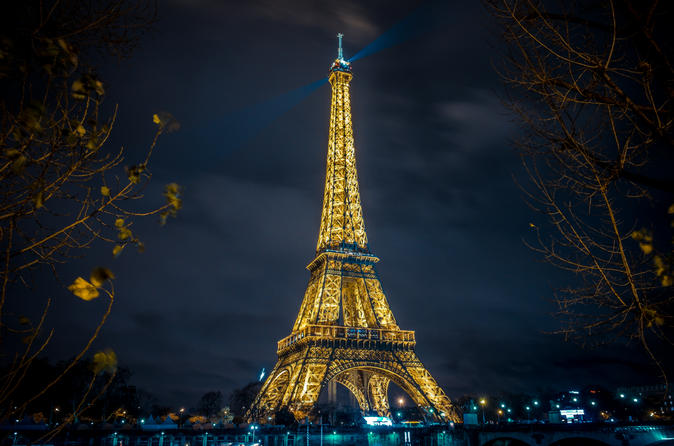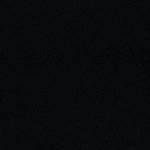-
Posts
391 -
Joined
-
Last visited
Reputation Activity
-
 sunyata got a reaction from foliovision in The very underestimated problem of RADIOACTIVE lenses
sunyata got a reaction from foliovision in The very underestimated problem of RADIOACTIVE lenses
from wikipedia, or course:
Thorium dioxide was formerly added to glasses during manufacture to increase their refractive index, producing thoriated glass with up to 40% ThO2 content. These glasses were used in the construction of high-quality photographic lenses. However, the radioactivity of the thorium caused both a safety and pollution hazard and self-degradation of the glass (turning it yellow or brown over time). Lanthanum oxide has replaced thorium dioxide in almost all modern high-index glasses.
and this:
it was found to be a carcinogen, sometimes causing cholangiocarcinoma (that is with respect to another use for thorium dioxide in the past, as an x-ray contrast agent).
I'm not really concerned about 90% of my lenses, but I was just working on an old rangefinder lens, including taking apart the elements and removing fungus, so this is good to know. My main concern wouldn't be beta rays but just doing something stupid like shattering a lens trying to re-glue it or something. Not likely, but I'm going to check if thorium dioxide was used in glass before I work on it now. Thanks for the post junior.
-
 sunyata got a reaction from Geoff CB in Sony F5 hack unlocks 4K XAVC recording
sunyata got a reaction from Geoff CB in Sony F5 hack unlocks 4K XAVC recording
guys, this applies to engines, whiskey, amplifiers, blu-ray players, vfx, lenses, monitor panels.. it's your job as DIY'ers, to find these imbalances, take the labels off, solder off the capacitors, hack the firmware, de-restrict the exhaust, snap the aperture rings... and keep it a secret: it's a good thing.
-
 sunyata got a reaction from vaga in The very underestimated problem of RADIOACTIVE lenses
sunyata got a reaction from vaga in The very underestimated problem of RADIOACTIVE lenses
from wikipedia, or course:
Thorium dioxide was formerly added to glasses during manufacture to increase their refractive index, producing thoriated glass with up to 40% ThO2 content. These glasses were used in the construction of high-quality photographic lenses. However, the radioactivity of the thorium caused both a safety and pollution hazard and self-degradation of the glass (turning it yellow or brown over time). Lanthanum oxide has replaced thorium dioxide in almost all modern high-index glasses.
and this:
it was found to be a carcinogen, sometimes causing cholangiocarcinoma (that is with respect to another use for thorium dioxide in the past, as an x-ray contrast agent).
I'm not really concerned about 90% of my lenses, but I was just working on an old rangefinder lens, including taking apart the elements and removing fungus, so this is good to know. My main concern wouldn't be beta rays but just doing something stupid like shattering a lens trying to re-glue it or something. Not likely, but I'm going to check if thorium dioxide was used in glass before I work on it now. Thanks for the post junior.
-
 sunyata reacted to Don Kotlos in Sony A7S II is out!
sunyata reacted to Don Kotlos in Sony A7S II is out!
Here is another example only to show that the codec and bitrate play a big role for banding . So when comparing footage is always crucial to match these.
Took a 10bit 4K GH4 sample, transcoded to 3 different 1080p, matched histograms (as close as I could) and graded with the same LUT.
-
 sunyata reacted to TheRenaissanceMan in Great article
sunyata reacted to TheRenaissanceMan in Great article
And most of the industry. https://vimeo.com/106153701
Seriously dude, let it go. 4K is nice to have, not need to have. Compression, color depth, bit depth, DR, and color science matter much more.
-
 sunyata reacted to Nikkor in Sony A7S II is out!
sunyata reacted to Nikkor in Sony A7S II is out!
I had that marcie once to try out some stuff and the file was very nice to work with in photoshop. I think it's some raw negative scan, you tell me
-

-
 sunyata reacted to Xavier Plagaro Mussard in Canon announces development of 8K Cinema EOS camera and 120MP DSLR
sunyata reacted to Xavier Plagaro Mussard in Canon announces development of 8K Cinema EOS camera and 120MP DSLR
It's difficult to tell 2K from 4K in a theater, let alone in a tv. 8K is nowadays as useless as it can get, to me. And I am for progress. But better codecs and more ergonomic/better menus cameras would be more welcome, at least by me!
RAI, italian public television broadcasts in SD 4:3.
-
 sunyata reacted to KarimNassar in Canon announces development of 8K Cinema EOS camera and 120MP DSLR
sunyata reacted to KarimNassar in Canon announces development of 8K Cinema EOS camera and 120MP DSLR
yeah well if they could get into a dynamic range and color depth war that would be great thanks.
can't wait to get my compressed 8k 4:2:0 8 bit image. so exciting.
-
 sunyata got a reaction from benymypony in Pssst... free LUT calc tool over here:
sunyata got a reaction from benymypony in Pssst... free LUT calc tool over here:
Assuming you haven't seen this.. it looks like cameramanben has done something really useful here: he's compiled a ton of research and written a JavaScript LUT calculator tool released under a GNU freesoftware license (I think this is about as free as it gets). This could be used for 1D shaper LUT's, or 3D LUT's with gamma/gamut baked together - if that's more your thing - and even custom code value ranges. I think you can upload a sample image too. I see an A7s profile as well as Rec2020 gamut, DCI-P3 gamut... it's on github.
Online tool: http://cameramanben.github.io/LUTCalc/LUTCalc/index.html
Link to browser based apps: https://cameramanben.github.io/LUTCalc/
Objective-C wrapper for MacOS: https://github.com/cameramanben/LUTCalc-For-Mac
He needs a donation button somewhere.
-
 sunyata got a reaction from Zak Forsman in Pssst... free LUT calc tool over here:
sunyata got a reaction from Zak Forsman in Pssst... free LUT calc tool over here:
Assuming you haven't seen this.. it looks like cameramanben has done something really useful here: he's compiled a ton of research and written a JavaScript LUT calculator tool released under a GNU freesoftware license (I think this is about as free as it gets). This could be used for 1D shaper LUT's, or 3D LUT's with gamma/gamut baked together - if that's more your thing - and even custom code value ranges. I think you can upload a sample image too. I see an A7s profile as well as Rec2020 gamut, DCI-P3 gamut... it's on github.
Online tool: http://cameramanben.github.io/LUTCalc/LUTCalc/index.html
Link to browser based apps: https://cameramanben.github.io/LUTCalc/
Objective-C wrapper for MacOS: https://github.com/cameramanben/LUTCalc-For-Mac
He needs a donation button somewhere.
-
 sunyata reacted to LimitBreak in Canon's new $30,000 video camera does only 1080p
sunyata reacted to LimitBreak in Canon's new $30,000 video camera does only 1080p
The ME20F-SH is a low light capable video camera with photosites sized to 19 microns on it's 2.26 MP full-frame 35mm CMOS sensor to deliver an ISO equivalent of more than 4 million. The suggested retail price is $30,000
I guess the A7s just got a little competition lol, will see how the cheaper A7sII will stack up in the Iso capabilities and real world low light performance.
http://www.engadget.com/2015/07/30/canon-me20f-sh/
http://***URL removed***/articles/5496399487/canon-multi-purpose-me20f-sh-camera-reaches-iso-4-million
-
 sunyata reacted to richg101 in Slowest shutter speed in video mode
sunyata reacted to richg101 in Slowest shutter speed in video mode
Sony allow as slow as 1/4sec at any frame rate. shooting at 25p and 1/5th sec then speeding it up by 500% gives beautiful low light results for timelapse type stuff. with the motion blur which is very pleasing for thing slike cars in the dark.
https://vimeo.com/52579247
-
 sunyata got a reaction from Tim Fraser in How I would describe 1dc video quality
sunyata got a reaction from Tim Fraser in How I would describe 1dc video quality
One of my favorite 35mm (film) rangefinders is the Olympus 35SP which is a fixed lens Zuiko 42mm 1.7, which has a Super 35 cine equivalent of 28mm. So if you want to take some Super 35 @ 28mm "cine" film photos for reference, get an Olympus 35SP and buy some hand rolled ECN-2 film.
-
 sunyata reacted to bamigoreng in "Untraditional" focal lengths with intention
sunyata reacted to bamigoreng in "Untraditional" focal lengths with intention
Nice! Canon 7D sensor size - 22.3 x 14.9mm. Nikon D3100 - 23.1 x 15.4mm.
-
 sunyata got a reaction from kaylee in "Untraditional" focal lengths with intention
sunyata got a reaction from kaylee in "Untraditional" focal lengths with intention
updated the comparator, it is now "Il Comparatorre".. bigger pictures, updated layout.
-
 sunyata reacted to Shield3 in How I would describe 1dc video quality
sunyata reacted to Shield3 in How I would describe 1dc video quality
Quick link. I know this is simple home video type stuff, but to me I like the look.
4k 1dc file, built-in audio.
https://drive.google.com/file/d/0B3W9u9cu-URWd2N4LWZzY2NkcXc/view?usp=sharing
4k frame grab...
-
 sunyata got a reaction from Jonesy Jones in "Untraditional" focal lengths with intention
sunyata got a reaction from Jonesy Jones in "Untraditional" focal lengths with intention
updated the comparator, it is now "Il Comparatorre".. bigger pictures, updated layout.
-
 sunyata reacted to Axel in Too late for an a7s guide?
sunyata reacted to Axel in Too late for an a7s guide?
Yes, the Wolfcrow E-Book is $80, and though it may gather all information the author knew about at the time he first published it, he has very headstrong opinions, which imo don't help to get the best out of your camera.
Me and my buddy are only testing the A7s since a month now or so. We have a lot of Canon glass, so we bought the Metabones adapter. Can't recommend it, because it turned out to be unreliable (aperture). We have a Sony Zeiss 16-35 and a Sigma 24-105 (imo the better one, 24mm is also wide enough), both E-mount of course. For faster primes, we are planning to buy some Rokinons, perhaps 50 + 85.
As I wrote before, I'm no friend of superflat PPs with an 8-bit codec. Try autumn leaves, and you will get better skin tones than with any SLog+LUT-treatment. But that's my strong opinion.
-
 sunyata got a reaction from Xavier Plagaro Mussard in "Untraditional" focal lengths with intention
sunyata got a reaction from Xavier Plagaro Mussard in "Untraditional" focal lengths with intention
i didn't find that skyline photo in the comparator app very useful, so i hacked it (kinda, not really) and i added an A7s sensor profile. now it starts at 15mm because that was the example photo that i found, taken with the Sony SEL1080 10-18 at 15mm full frame with an A7s. will probably take down soon because i don't plan on re-writing the javascript, although it could use it.
-
 sunyata reacted to TheRenaissanceMan in Controlling highlight saturation by luminance
sunyata reacted to TheRenaissanceMan in Controlling highlight saturation by luminance
I know this is completely unhelpful, but this makes me really happy I'm using DaVinci Resolve now.
-
 sunyata reacted to AaronChicago in Controlling highlight saturation by luminance
sunyata reacted to AaronChicago in Controlling highlight saturation by luminance
That looks like a good option. I figured out another way to identify super highlights in colorista with a key. Shadows didn't work out. I'll try your method for shadows.
-
 sunyata reacted to jgharding in Controlling highlight saturation by luminance
sunyata reacted to jgharding in Controlling highlight saturation by luminance
To do this easily and accurately it's best to round trip with Speedgrade.
at the moment FCPX does this much more easily I'm afraid.
Adobe would be wise to just pull the whole of Speedgrade correction into Premiere as a plugin or panel.
-
 sunyata got a reaction from AaronChicago in Controlling highlight saturation by luminance
sunyata got a reaction from AaronChicago in Controlling highlight saturation by luminance
Define the tonal ranges in a clip
The Luma Corrector, RGB Color Corrector, and Three-way Color Corrector effects let you define the tonal ranges for the shadows, midtones, and highlights so you can apply a color correction to a specific tonal range in an image. When used along with the Secondary Color Correction controls, defining a tonal range can help you apply adjustments to very specific elements in the image.
Select the clip you want to correct in a Timeline panel and apply either the Luma Corrector, RGB Color Corrector, or Three-way Color Corrector effect. In the Effect Controls panel, click the triangle to expand the Luma Corrector, RGB Color Corrector, or Three-way Color Corrector effect. Click the triangle to expand the Tonal Range Definition control. Tonal Range Definition control
A. Shadow threshold B. Shadow softness C. Highlight softness D. Highlight threshold Drag the Shadow Threshold and Highlight Threshold sliders to define the shadow and highlight tonal ranges.It’s best if you make the adjustments while viewing the tritone Tonal Range display of the image.
Drag the Shadow Softness and Highlight Softness sliders to feather (soften) the boundaries between the tonal ranges.The amount of falloff depends on the image and how you want the color correction applied to it.
Note:
You can also define the tonal ranges by changing the numeric values or moving the sliders for the Shadow Threshold, Shadow Softness, Highlight Threshold, and Highlight Softness.
This doesn't do it?
-
 sunyata got a reaction from kaylee in Controlling highlight saturation by luminance
sunyata got a reaction from kaylee in Controlling highlight saturation by luminance
Define the tonal ranges in a clip
The Luma Corrector, RGB Color Corrector, and Three-way Color Corrector effects let you define the tonal ranges for the shadows, midtones, and highlights so you can apply a color correction to a specific tonal range in an image. When used along with the Secondary Color Correction controls, defining a tonal range can help you apply adjustments to very specific elements in the image.
Select the clip you want to correct in a Timeline panel and apply either the Luma Corrector, RGB Color Corrector, or Three-way Color Corrector effect. In the Effect Controls panel, click the triangle to expand the Luma Corrector, RGB Color Corrector, or Three-way Color Corrector effect. Click the triangle to expand the Tonal Range Definition control. Tonal Range Definition control
A. Shadow threshold B. Shadow softness C. Highlight softness D. Highlight threshold Drag the Shadow Threshold and Highlight Threshold sliders to define the shadow and highlight tonal ranges.It’s best if you make the adjustments while viewing the tritone Tonal Range display of the image.
Drag the Shadow Softness and Highlight Softness sliders to feather (soften) the boundaries between the tonal ranges.The amount of falloff depends on the image and how you want the color correction applied to it.
Note:
You can also define the tonal ranges by changing the numeric values or moving the sliders for the Shadow Threshold, Shadow Softness, Highlight Threshold, and Highlight Softness.
This doesn't do it?








